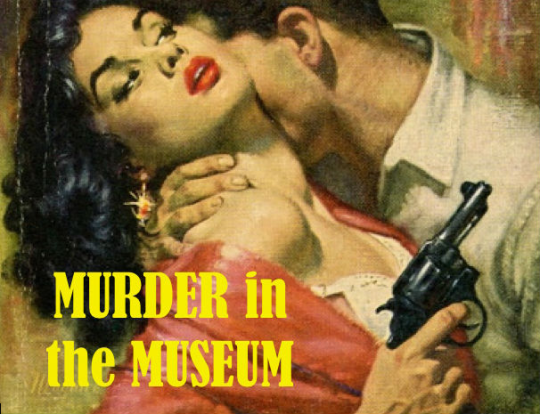
Reynolda House Museum of American Art is one of our Nation’s most venerable institutions, home to 300 years of masterpieces by artists all the way back to Gilbert Stuart, whose portrait of George Washington appears on the one dollar bill.
Who would imagine that this sleepy, picturesque estate and pillar of American culture was once the scene of a grisly unsolved mystery.
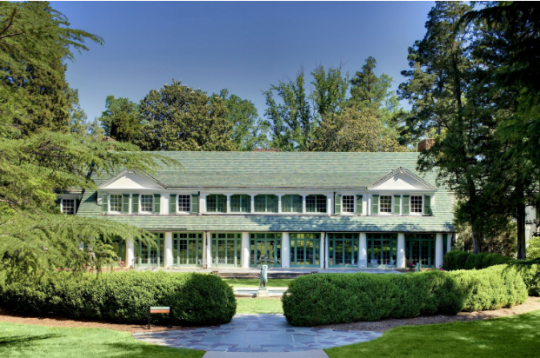
View of Reynolda House from the gardens.
Picture it: North Carolina, 1932, a Southern mansion on a steamy July night. A 21st birthday party rages into the midnight hour. Sexual tensions run high between bachelors delirious with bootlegged moonshine, and debutante flappers dripping in beads. The muffled shouts of a lover’s quarrel are barely audible under the blaring frenzy of Dixieland Jazz, and then…a shot rings out! The party guests rush to the porch to find the master of the house, a millionaire playboy, lying in a pool of blood. His sultry, up-North bride is not far away. At his side, the proverbial smoking gun. Surely this Southern Gothic Pulp Fiction must be the product of some secret love-child of William Faulkner and Raymond Chandler! Think again. This sordid tale could only come from the twisted weavings of truth.
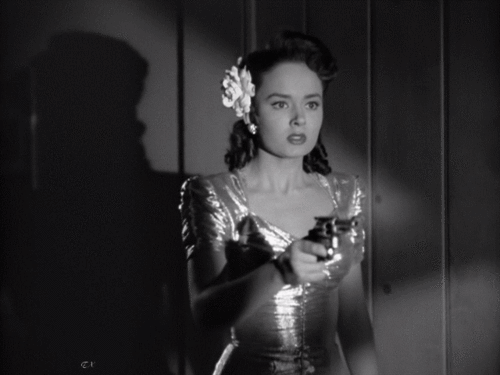
Richard Joshua “R. J.” Reynolds and his wife built Reynolda House as their dream home in 1917. R. J. Reynolds had founded a tobacco empire on the novel idea of pre-packaged cigarettes, called “Camels” because they were rolled in Turkish paper. It turns out catering to people’s addictions is very lucrative, and R. J. quickly became the richest man in North Carolina. He married his much younger cousin, Katherine Smith Reynolds, and despite the age difference they loved each other dearly.

Interior of Reynolda House, where the lethal party took place: a luxurious setting for a macabre finale.
Their youngest son Zachary didn’t follow their example. Not yet 20 years of age, he had already married, fathered a child, and divorced, after eloping at 1:00 the morning of his eighteenth birthday with textile heiress Anne Cannon. For wife number two, he set his sights on the seductive actress Libby Holman.
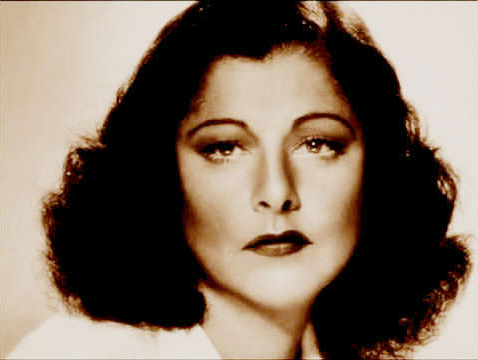
Libby Holman: a femme fatale fit for the silver screen!
By the 1930s, Southern high society was finally catching on to the dangers of inbreeding, and the new trend was to “marry from off,” but Zachary was way too off. Imagine the shock of the blue-blooded Carolina Reynolds dynasty when young Zachary brought home Libby, a Jewish Broadway diva and blues singer seven years older than him, notorious for her numerous romps in the sheets with both men and women. Zachary, an avid aviator, chased Libby around the world in his personal plane before one of her lesbian lovers convinced her to marry the well-heeled tobacco prince.
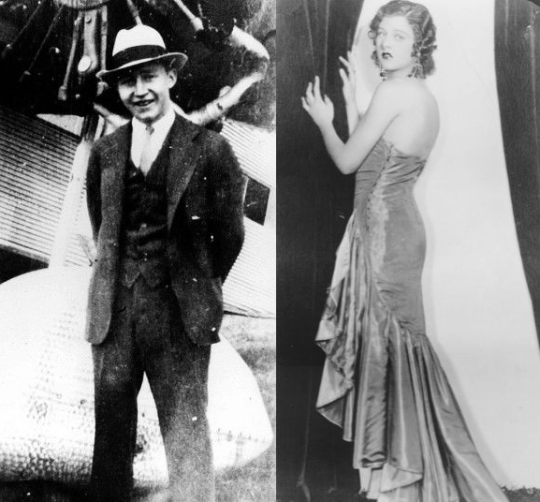
Zachary Reynolds poses in front of his plane, and Libby in her one of her signature strapless gowns (some credit her with inventing the strapless dress).
The family’s affection for Libby did not warm when she made herself a bit too at home at Reynolda House, frequently inviting her bohemian, swinging bisexual theatre crowd for wild, week-long extravaganzas on the estate. It was at one such party, thrown for a friend’s twenty-first birthday, that Zachary sipped his last mint julep. The newspapers tried to spin the party as “a small informal dinner party” but other reports claimed “bootleg liquor had been flowing.”
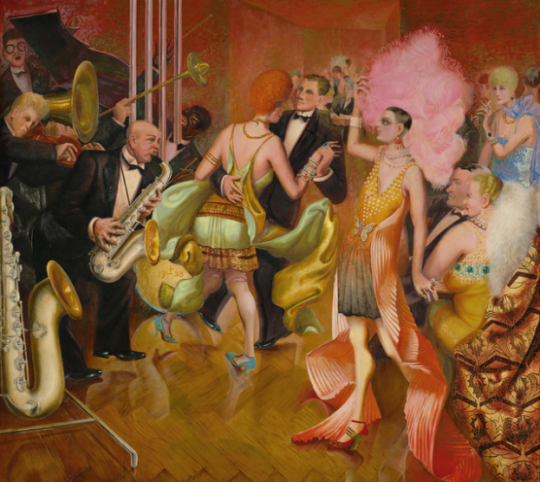
Libby’s raucous parties at Reynolda may have looked something like this jazz-age scene, detail from Metropolis by Otto Dix, at the Stuttgart Art Museum.
Guests heard a gun go off around one 1:00am and found Zachary unconscious on the sleeping porch, a bullet through his head. His childhood friend, Albert “Ab” Walker rushed him to the hospital, but he was dead by dawn. Libby was near collapse, so hysterical she was placed under the supervision of doctors. Witnesses reported that Zachary had been cleaning his gun when it accidentally misfired, an open-and-shut case. A grieving widow, a dutiful friend’s heroic attempt to save him, such a senseless tragedy…but trouble had been brewing in paradise.
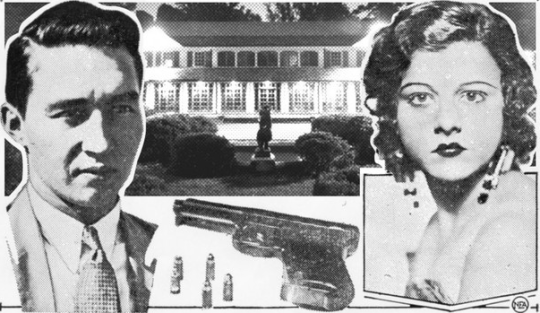
Newspaper illustration showing Zachary, Libby, alleged murder weapon and Reynolda House.
During the party, Zachary had discovered Libby was pregnant and a heated argument ensued. What cause could a young husband have to be angry that his blushing bride was carrying a son and heir? Rumors flared that Libby, the Broadway temptress, had been around the block more times than a Subaru trying to find parking in Union Square. And who was her latest conquest? None other than Ab Walker, Zachary’s best buddy, the very same who had rushed him to the hospital after the fatal shot.
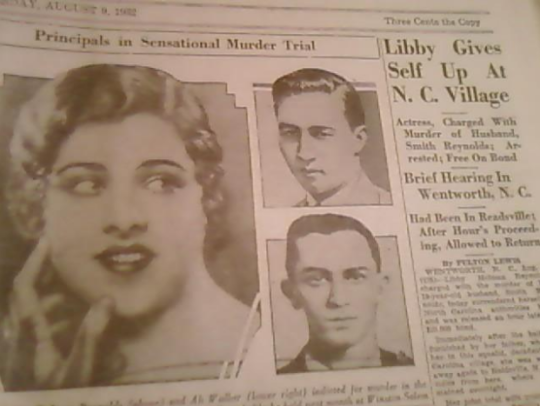
Ripped from the headlines: Libby’s sordid love triangle with Zachary and Ab.
Libby and Ab and were indicted for murder. Tabloid photographers caught her going into the courthouse swathed in a black veil so dark that reporters claimed she was black or “mulatress.” The evidence was conflicting, and the Reynolds family finally dropped charges to contain the scandal. The district attorney later confessed to a journalist that Libby was innocent. It was the old, old story: a depression-era Southern town, a Jewish outsider with dark skin, an obvious case of racial prejudice. Or Was it? Ab Walker allegedly told fellow party guests “There’s some secret about this matter I’m going to take to the grave.”
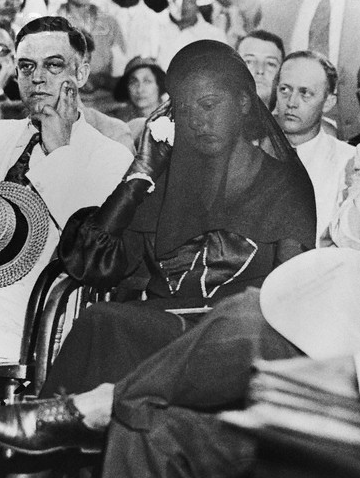
Libby faces trial in her infamous “Negro” veil.
Ultimately, the death was ruled a suicide, but what was the “secret” Ab Walker so cryptically mentioned. Were Ab and Libby innocent victims of antisemitism, or did they know more than they let on? And who really fathered that baby in Libby’s womb?

Perhaps it was a murder. Perhaps Zachary, heartbroken that his wife was carrying his best friend’s bastard, committed suicide. Or maybe it really was just a senseless accident after all (I mean, who hasn’t drunkenly tried to clean their gun at one in the morning during a party?). We may never know what really happened that fateful night in 1932.
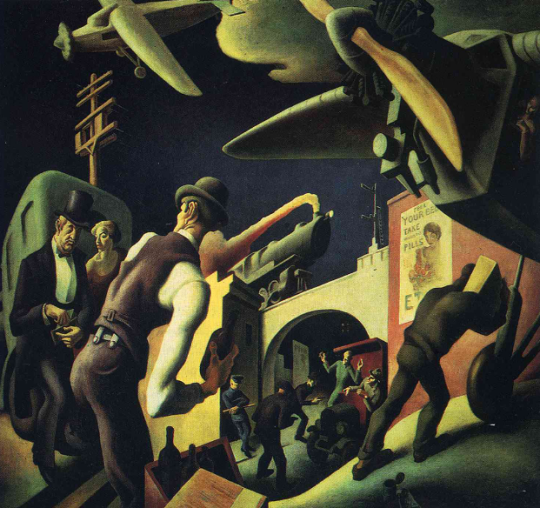
Bootleggers by Thomas Hart Benton, at Reynolda House.
This piece from the museum’s collection prophetically captures key elements of the case: Zachary’s aviation career and the presence of bootlegged liquor at the fatal party.
The Reynolda House shooting practically wrote itself for Hollywood, so it’s unsurprising that this real-life melodrama inspired three films. Characters loosely based on Libby were portrayed by Leila Hyams in Sing Sinner Sing (1933), Jean Harlow in Reckless (1935), and Lauren Bacall in Written on the Wind (1956). There are also ongoing talks of a miniseries (yes please!).
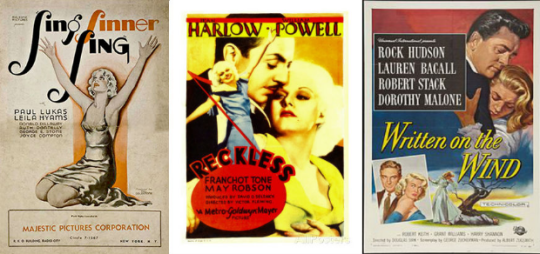
Three sizzling screen icons star in three movies based on the case!
But a story this torrid doesn’t end when credits start rolling. Following the murder trial, the tabloid soap opera continued as Libby, clutching her newborn in her arms, and Zachary’s first wife engaged in a bitter legal battle to get hold of Zachary’s millions, and determine whose baby should inherit the Reynolds fortune.
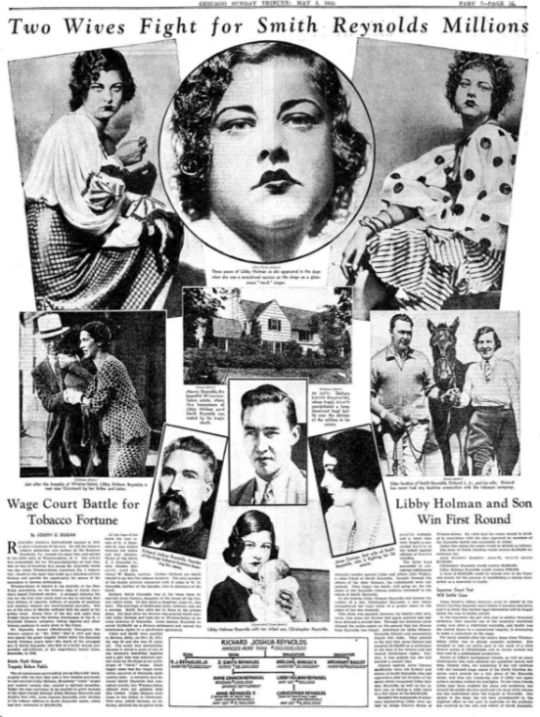
Chicago Tribune clipping of the Libby/Anne Cannon Reynolds feud.
This wasn’t Libby’s only vicious, highly publicized rivalry with another woman. A few years after the incident, while starring with latina actress Lupe Velez in Cole Porter’s You Never Know, the two became arch-enemies. Nicknamed the Mexican Spitfire, Lupe wasn’t a girl you wanted to get on the wrong side of. She took a piss outside Libby’s dressing room and punched her in the face during curtain calls. Lupe’s life was similarly wrought with scandal. She later committed suicide, according to urban legend by drowning in a toilet.
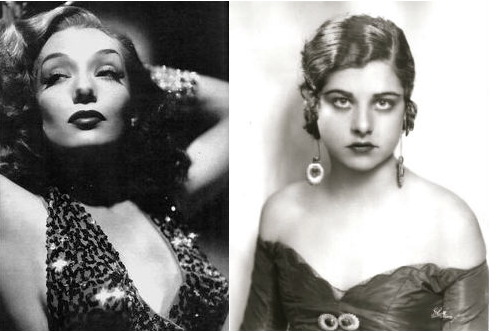
Lupe vs. Libby! Battle of the Broadway babes!
Libby moved on to other exploits, and other conquests. She was the original cougar, fancying much younger men well into middle age. Her most famous boy-toy was movie star Montgomery Clift. She had stiff competition, since not only was Clift a closeted homosexual, his other prefered beard was none other than Elizabeth Taylor (that can’t be good for a girl’s self-esteem). When Clift was offered the lead role in Sunset Boulevard, as the kept gigolo of an aging ex-star, Libby supposedly threatened to commit suicide if he accepted.
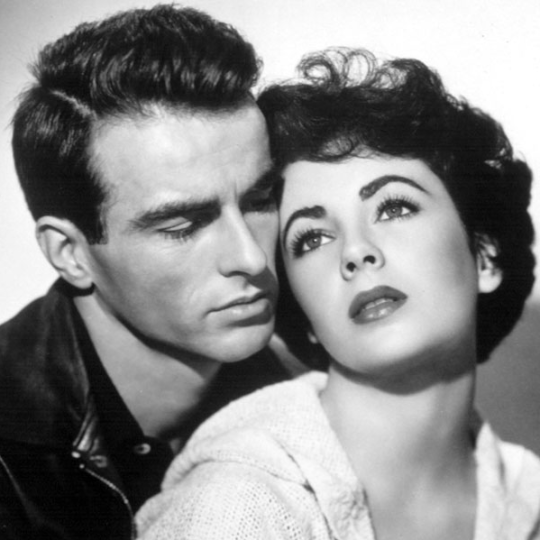
Prettyboy Montgomery Clift shares screen time with Elizabeth Taylor in A Place in the Sun: stiff competition for over-the-hill Libby.
Libby may have walked for a crime, but the merciless hands of fate have a long reach. A Kennedy-style curse seemed to follow everyone she touched. Her second husband Ralph Homes overdosed on sleeping pills, after his brother who she also dated died in a plane crash. Her son Christopher Reynolds (the baby she was pregnant with at the time of the shooting) died at age 17 in a climbing accident on Mount Whitney. Libby asphyxiated herself in a Rolls Royce, in the most glamorous exit scene since The Suicide of Dorothy Hale, a tragically poetic end for a woman who may or may not have gotten away with murder.
All right, Mr. Demille, she’s ready for her closeup!
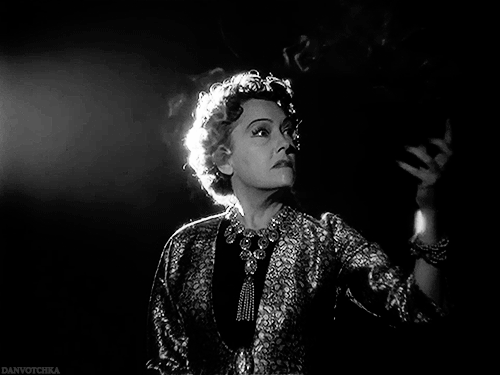
By: Griff Stecyk










This blog wasn't going where I thought it was going!